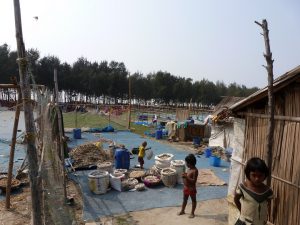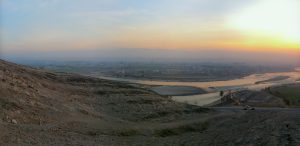As this piece goes into print, the United States is struggling with the outcome of Oroville dam overflow, in which 200,000 people were evacuated in California, emphasising, yet again, the dangers of mere technocratic management of water systems.
In mid-2016, Bengaluru – the capital of the Indian state of Karnataka and known as “India’s Silicon Valley” – was engulfed in violence after the Supreme Court ordered Karnataka to release water from the Cauvery River to downstream Tamil Nadu. Fifteen years ago, under similar circumstances, farmers in Karnataka had attempted to burn trains and the police had opened fire to disperse protesting groups. At the time tensions between the two states were so high that Tamil movies were banned in Karnataka. Such types of continuing disputes, within and between countries, on sharing river waters not only affect the economic well-being of communities but also social harmony between them.
This is only one of the many problems of water use and management in South Asia. Pollution, ill planned interventions and mining of riverbeds are irreversibly transforming riverine ecosystems. In many regions, excessive groundwater pumping has lowered water tables and worsened the problems. Unfortunately, viable solutions for addressing such problems are not always forthcoming, especially as conflict and violence complicate the quest for solutions. How then, as water scarcity becomes more palpable, do we address and overcome such challenges?
Reversing environmental degradation, ensuring equitable allocation of water, and minimising disputes on the use of rivers require us to first remember that water is continuous (with upstream-downstream dimension) and renewable, but finite. Within the hydrological cycle, it is available in many forms – snow and snow-packs, glaciers, rainfall, river flows, wetlands, lakes, ponds, soil moisture and groundwater. The processes of sediment erosion, transportation and deposition that shape rivers and flood plains also occur within the hydrological cycle. Together the network of river channels, landscapes, ecosystems, community and their cultures, from headwater to downstream, constitute the waterscape. The health of any waterscape is fundamental to the well-being, lives and livelihoods of communities that depend on it.
Knowledge milestones
We should also remember the three milestones achieved in the late 1920s and mid-1930s related to water science and technology consolidating as wisdom for water development and management. These were:
- The completion of the Sharada irrigation canal;
- The completion of the Hoover Dam; and
- The finalisation of the mathematical formula to estimate the Friction Factor in pipes that convey fluids.
These milestones helped consolidate the prevailing utilitarian approach to water development and management: that the flow of water should be towards settlements for maximising human benefits, and away from downstream reaches, wetlands, deltas and the river itself. The unquestioned pursuance of this approach, over the years, is one of the reasons for the pervasive degradation of the waterscape.
In 1928, the Sharada irrigation canal began serving the command areas of today’s Uttar Pradesh with water from the Sharada River (known as Mahakali in Nepal). This project was considered among the finest works of hydrological engineering of the time, built to provide irrigation for a region of 25,500 square kilometres. The project was also used to educate engineers and irrigators from across the world. The British colonial government invested in developing the irrigation systems primarily to generate revenue for itself.
A few years later, in 1936, the US Bureau of Reclamation completed the 221.4-metre high Hoover Dam on the Colorado River. The first of its kind to be built, the gravity-arch concrete dam paved the way for many more dams to be built worldwide.
The third milestone, achieved around 1937, was the formula for estimating the Friction Factor used to design pipes that convey fluids. Since the 1850s, hydraulic engineers, physicists, and mathematicians had been relentlessly researching to understand and measure the Friction Factor necessary for the optimum design of pipes that convey drinking water, liquids and gases. This eventually led to the Colebrook and White equation, and led to the ability to more accurately build pipes that would contain the flow of fluids.
The three milestones seemingly brought the history of water science – or at least hydrological engineering – to an end. Each improved the capacity of engineers to design and build irrigation canals, hydropower systems and supply pipes, respectively. Tools were perfected to meet beneficial human uses: irrigation for food, hydro-electricity for industrial and economic development, and infrastructure for supplying drinking water and liquids such as petroleum.
Social and environmental costs
As application of these tools progressed in many developed countries including the US, basic human needs were largely met but concerns about nature and society remained ignored. Subsequent efforts at broadening the understanding of the multifunctional role of water in nature and society did not receive priority. The deltas and wetlands became devoid of water flow as rivers were diverted upstream. The communities and mute life forms dependent on the natural upstream river supply paid heavily as the once flowing rivers turned into trickles.
The story was similar in many developing countries including those that became free from colonial rule. In South Asia, independent India and Pakistan used the same approaches for developing water. Aspects such as ecosystem, gender, poverty and social diversity were considered peripheral. Though the governments have built many water projects the quality of delivery of basic water services remain unsatisfactory while a political economy of water dominated by the rich and middle class urban users has evolved. Large sections of the population face drinking water and food insecurities. To make matters worse, the millions of people displaced when water related infrastructure projects were built received little or no compensation and lost their lives, livelihoods and culture.
The environmental consequences and unmitigated social costs of the utilitarian approach only began to get some recognition in the mid-1960s, when the plight of those ousted by dams began to be reported in the media. The first example in post-colonial South Asia was the plight of those ousted to build the Bhakra dam in the 1950s.
Consequently, governments of South Asia made some efforts to correct such oversights, but the momentum of utilitarianism marches on. Some regulatory instruments and safeguards do exist today, yet many establishments view them as mere irritants that delay the development of projects. Entrenched within their comfort zone and organisational rigidity, state agencies with the responsibility of managing water remain very territorial and inflexible. As a result, responses to deal with the increasing degradation of water, uncertainty and variability due to climate change, and unequal allocation receive only lip service from public agencies and from the wider society in general.
Re-conceptualising water stewardship
The old approach to water development and management – which emphasised engineering solutions to help provide water for agricultural needs or urban development – needs a rethink. It has not solved, or even lowered, the number of water disputes. Nor has it helped in maintaining quality of the waterscape. There is an urgent need to incorporate the use of rivers that create no violence, minimise disputes, mitigate environmental degradation, and meet equity objectives while contributing to development goals.
The way we create knowledge about water, and its uses, needs to fundamentally change. Along with formal academia, this new knowledge will have to be co-produced with the input of professionals, users of water and policy makers. These dialogues need to aim at appreciating different perspectives, and to go beyond stereotypes.
An ancient Sanskrit hymn that invokes rivers symbolically, highlights the notion of purity of water and connects South Asians living along the region’s many river basins:
Gange cha Yamune chaiva Godavari Saraswati,
Narmade Sindhu Cauvery jalesmin sannidhim kuru
(In this water, I invoke the presence of holy waters from the rivers Ganga, Yamuna, Godavari, Saraswati, Narmada, Sindhu and Cauvery).
The notion of holiness of rivers and their interconnectedness within the hydrological cycle embodied in the hymn could serve as starting points for South Asians to collectively reimagine stewardship of our rivers that need respect and deeper understanding than at present.
![<p>The Hoover Dam, the first gravity-arch concrete dam, was completed in 1936 [image by Anna Magal]</p>](https://dialogue.earth/content/uploads/2017/02/Hoover-dam-Anna-Magal.jpg)







